The Bamboo Garden
In the spring of 2006, following the collapse of some terrace walls, we re-landscaped the narrow terraces to make a wider, self-contained bamboo garden encased in dry stone walls.
This was the first new garden to be created within the olive grove we had been enjoying for the previous eight years. It was also to be a test to see if four years of studying horticulture and plants would be put to good use.
Bamboos are notorious for being invasive, and so it was fitting to keep this in mind during the re-construction of the terrace walls.
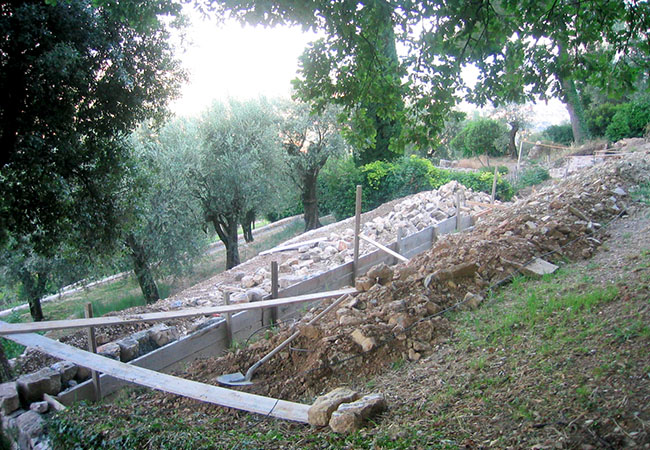
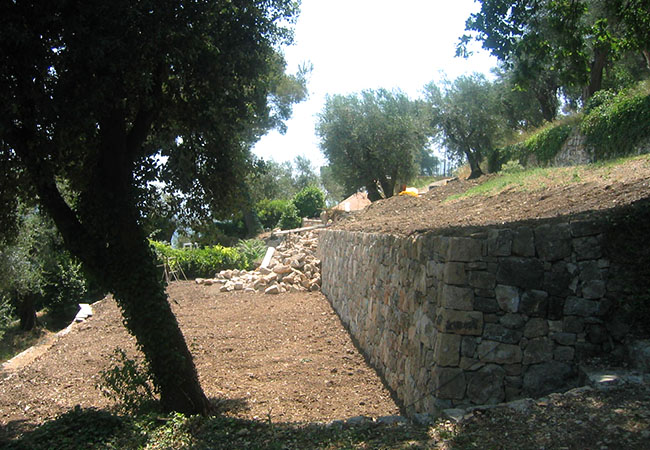
Pre-Planting Preparation
There was much to consider - we had no experience of bamboos, and we were unsure if introducing such a foreign group of plants into the olive grove was going to be detrimental.
Armed with photographs of the site and details of the soil, aspect and climatic conditions, we started our research.
We decided a walk-through tunnel, that is, a natural arch (without artificial support) made by the bamboos themselves, was the most desirable aim. To create a little mystery, on entering one should not be able to see the exit.
There were many questions we needed to ask ourselves: how many plants would we need, could they all be of the same type, and what about companion plants? We set to, and marked out the path with bags of flour.
We sought the advice of our nearest bamboo specialist Benoit Beraud at Les Bambous du Mandarin.
Bamboos require a rich damp soil in a sheltered position and plenty of moisture in the growing season. We were advised to add plentiful amounts of compost and well-rotted manure to improve the soil structure and to provide nutrients for the hungry new plants.
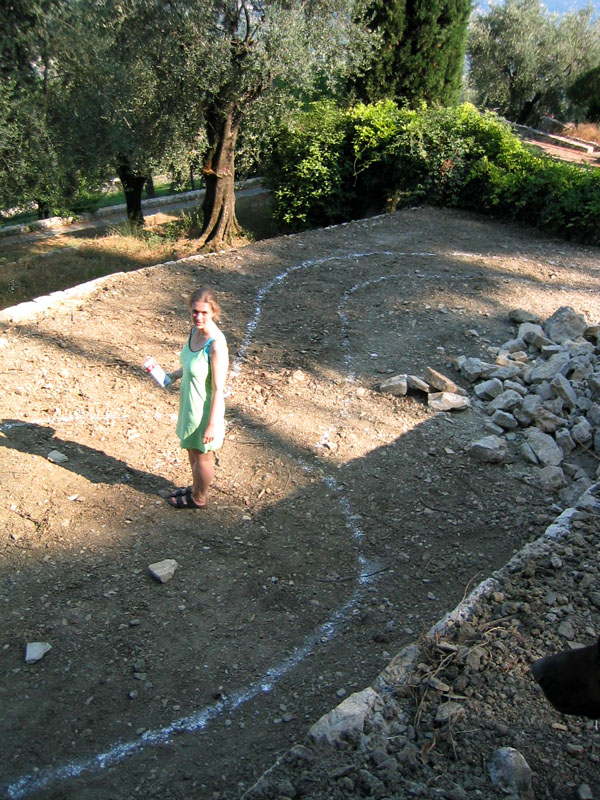
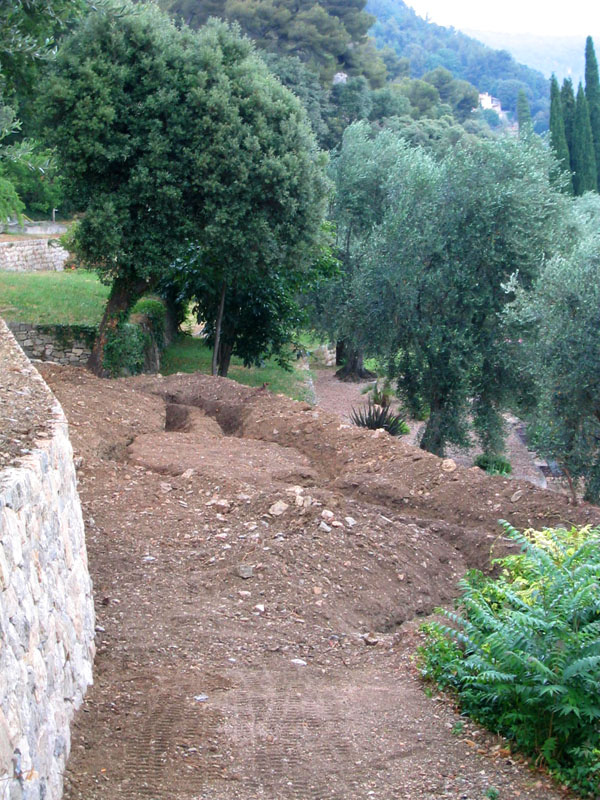
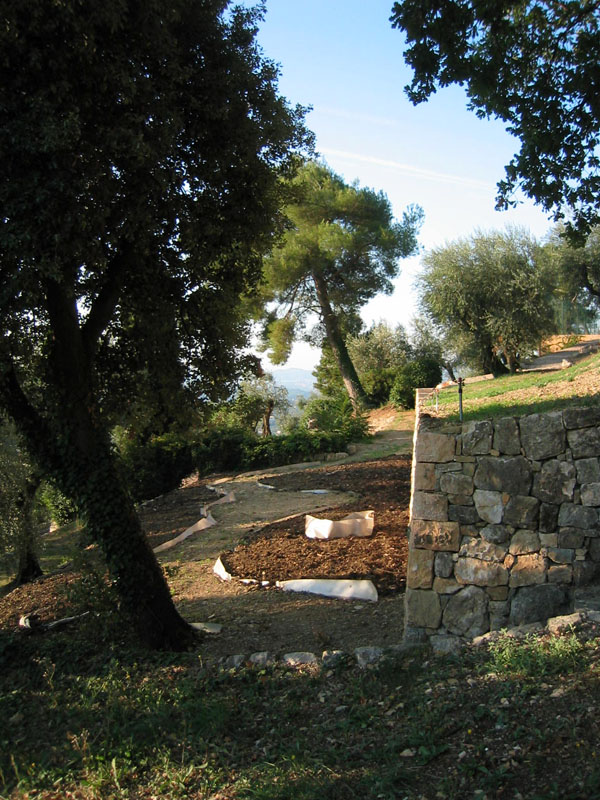
It would be necessary to install a spray watering system. The culms would need a lot of water in the first year, diminishing quantities over the next three or four years, and finally only in the growing season. A line of agricultural sprayers give the garden a daily drenching in the growing season.
Bamboos are very hardy, tolerating temperatures down to about -20°c, but they dislike prolonged exposure to hard frosts.
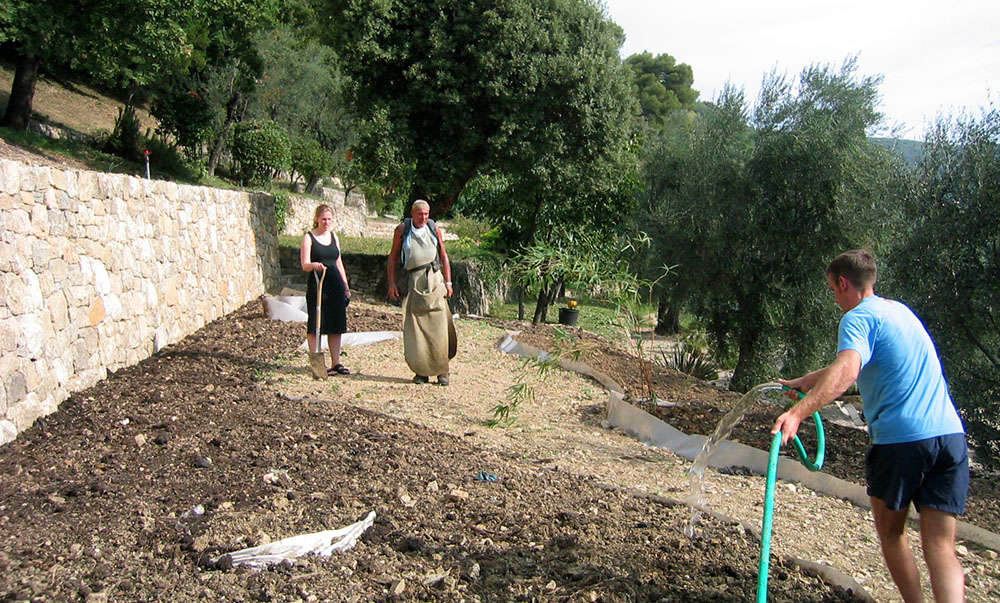
The specialist’s main advice was to use a root barrier ‘Stop Racine’. This was to be installed to a depth of 50cm, but 10cm should protrude above ground level to stop the roots running horizontally.
Bamboo roots do not go very deep, but rather spread horizontally. We dug our trenches to a depth of 60cm. The root barrier was held in place vertically while the soil was backfilled.
We later discovered that the roots of our bamboos (if unrestrained) grow down to a depth of approximately 55cm.
On the firm advice of Monsieur Beraud the bamboos were planted in the middle of August 2006.
The Choice of Plants
To create a tunnel, we were advised to choose naturally bending bamboos rather than the stiff upright type. The pathway should be at least two metres wide to allow for the passage of people.
More interest could be achieved by adding some specimen groups to the planting scheme – giving different heights, and stem colours, for example.
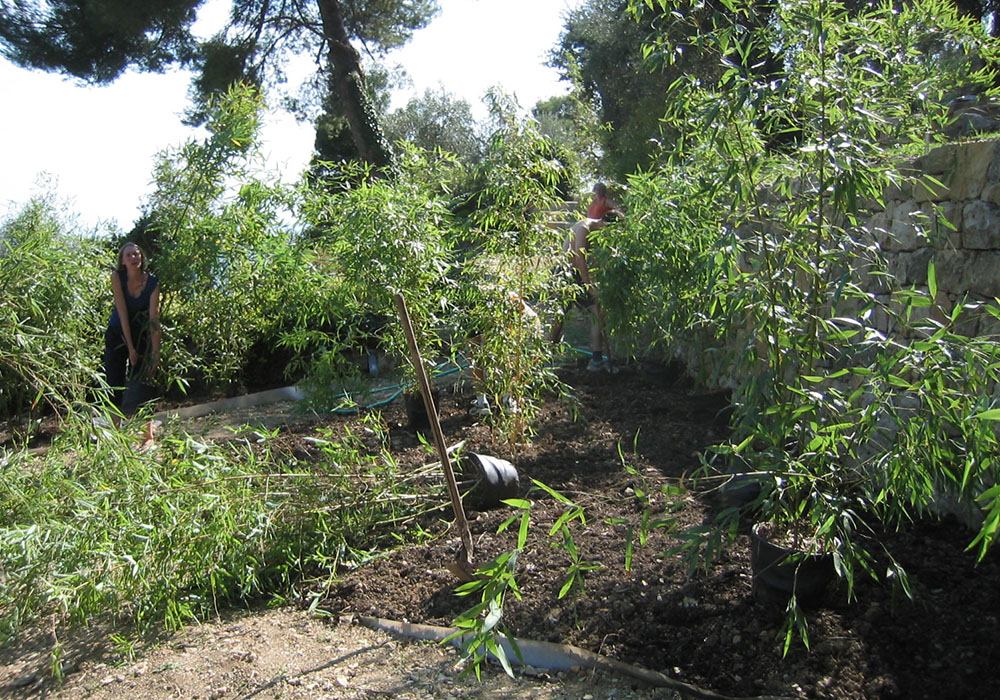
They are mostly Phyllostachys viridis glaucescens. This is a very ornamental plant. It will in time form a culm seven or more metres in diameter, so it is best grown in an isolated position, and if several plants are used they should be very widely spaced. Bamboos of the Phyllostachys type all have an indented groove (sulcus) on each section of the stem.
This is a good companion species to grow in a woodland because the plants are shallow rooted and do not compete with deep rooted trees. The rootstock is running rather than clump-forming, but it is not too invasive in the cooler climates. New shoots appear from early April.
We have included some specimen bamboos, to give further interest and Aspidistra eliator is planted at the edge of the path to eventually give a densely planted green edge to the bamboo.
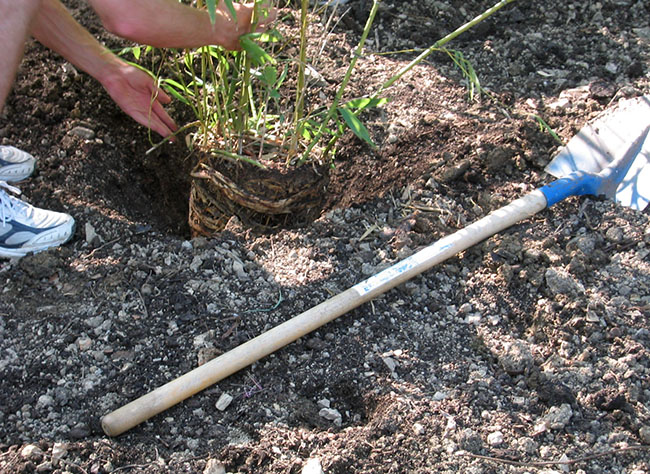
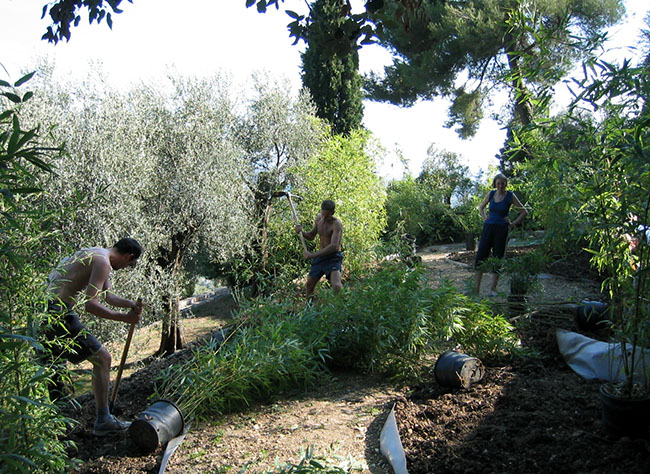
Enjoying Our New Shade Garden
The garden is one of the easiest we have to maintain – so enjoyment starts here!
We annually trim the side shoots off the bamboo stems to a height of 1.80m. This provides an environment where the leaves whisper in the breeze overhead and the light breaks through the stems to give dappled shade. In addition, we cut down any dead stems, and these are very useful as plant supports in other parts of the garden.
Most weeds are suppressed by allowing the bamboo leaf litter to remain on the ground amongst the stems.
The most strenuous task is to blow the leaves off the gravel path, and plump up a cushion for the seat!
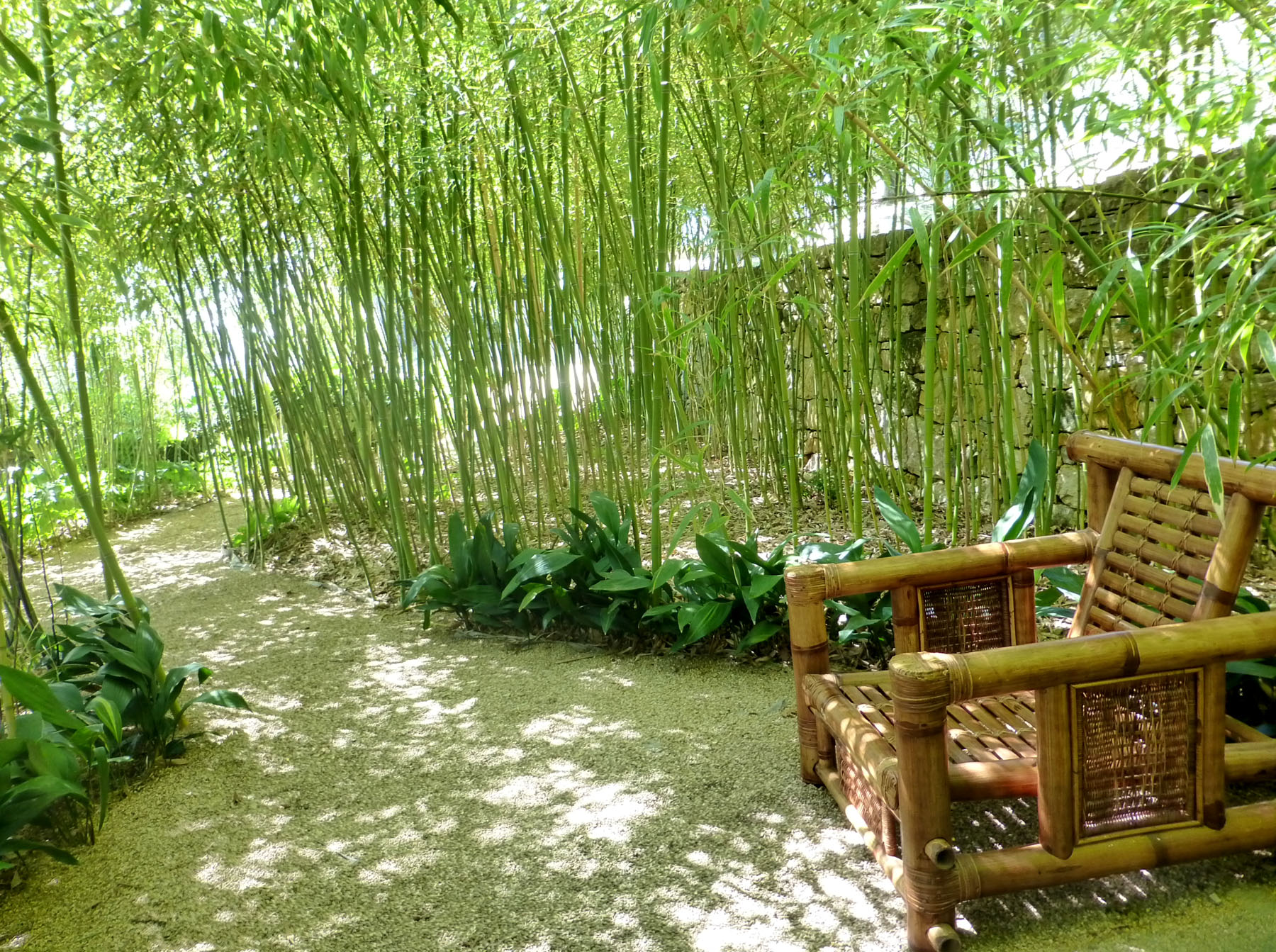
Our bamboo garden is now eight years old. It is often missed by visitors because of its discreet position, even though it is in the centre of the garden. Those who discover it are reportedly charmed by its calm and shade.

The Bamboo Garden in 2014
In early 2014 we noticed that some bamboo shoots were escaping the barriers we had installed around the garden entrance above the Ruin.
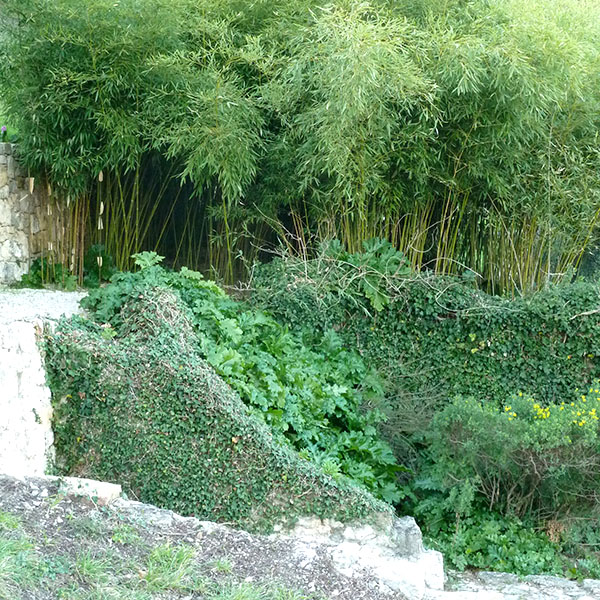
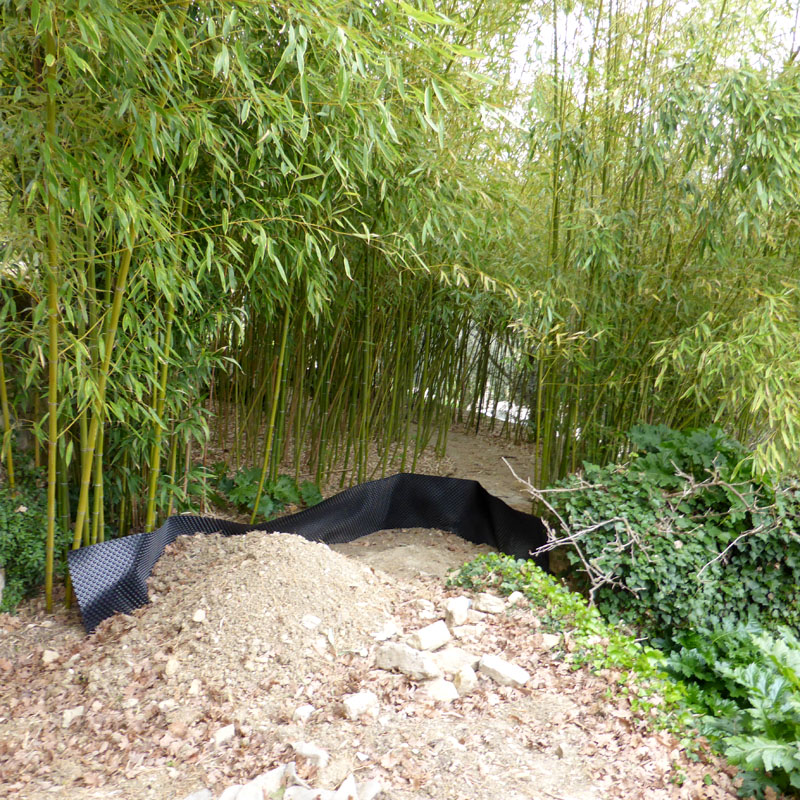
Clear instructions and good materials had been provided for the installation but on examination (digging up the entrance path and surrounding areas) we found that the installer had neither gone down to the agreed depth (50cm) nor installed any of the barrier once he was nearing the final part of the installation. Where bamboo is concerned cutting corners with the barrier is not a good idea!
As a consequence much avoidable work, at considerable expense, has been undertaken. This group of plants can give great pleasure but their propensity to spread needs careful consideration before planting commences. Beware!

The Bamboo Garden in 2018
The Bamboo Garden is now twelve years old and beginning to look very settled in the centre of our collection of terraces. After a trip to Japan, where we admired so many beautiful Japanese gardens and learnt a few of their inspirations and techniques. Inspired by these, we decided to include some Japanese garden elements nearby and leading to the Bamboo Garden to try to give an atmosphere of the oriental style.
These elements include:
- A gravel and shrub garden nearby featuring a stone lantern
- A statue of a calm Buddha overlooking the terraces leading to the bamboos
- A large old cloud-pruned Pistacia lentiscus – combining a Japanese technique with a local indigenous plant
- Several large topiarised shrubs, notably bays (Laurus nobilis)
- A plantation of Japanese irises on the path below the Bamboo Garden. Iris japonica is often found growing wild with bamboos in Japanese woodlands
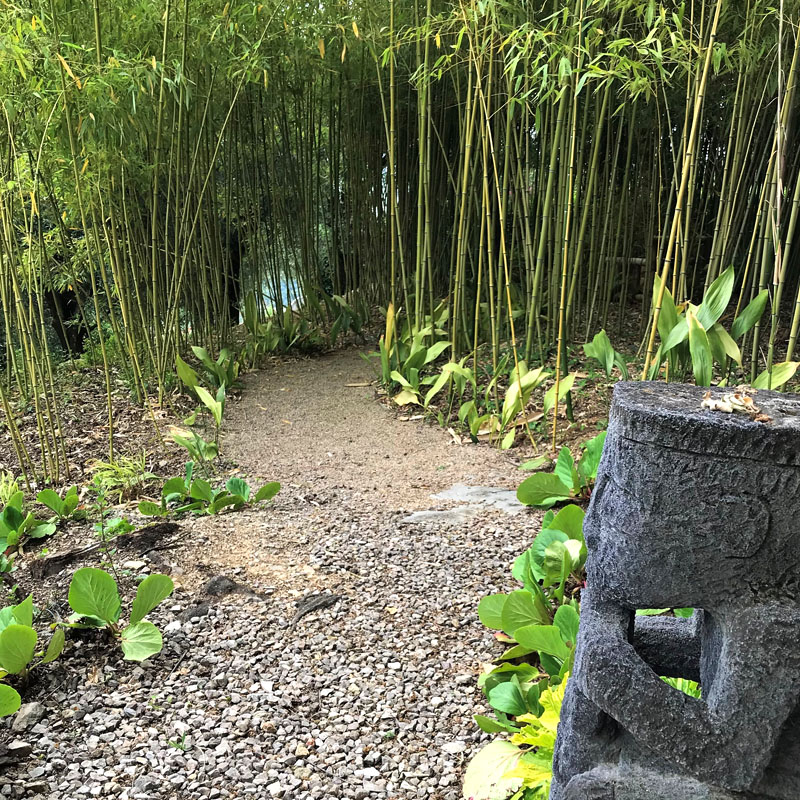
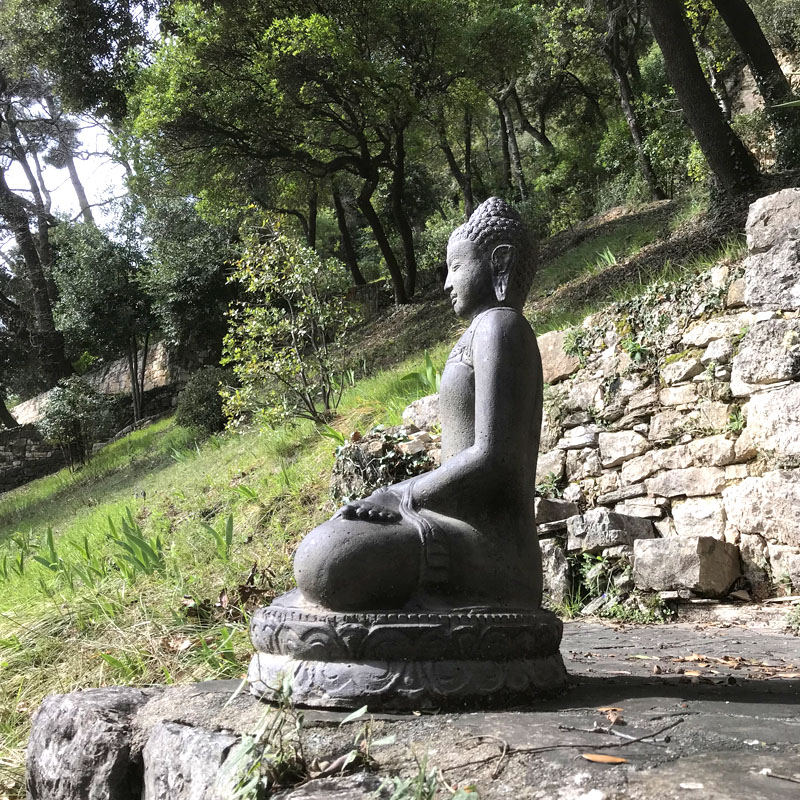
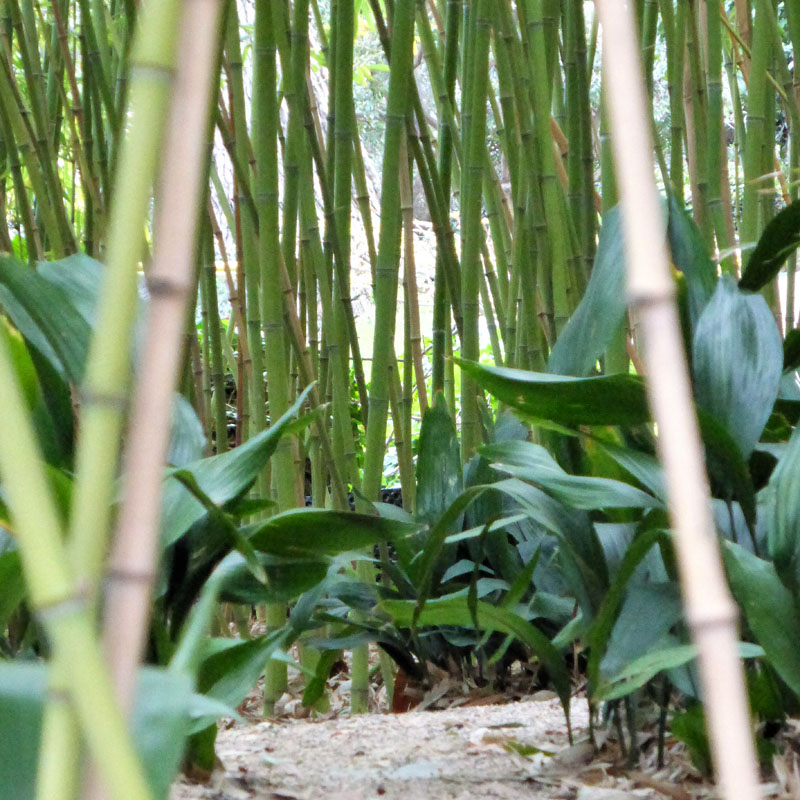
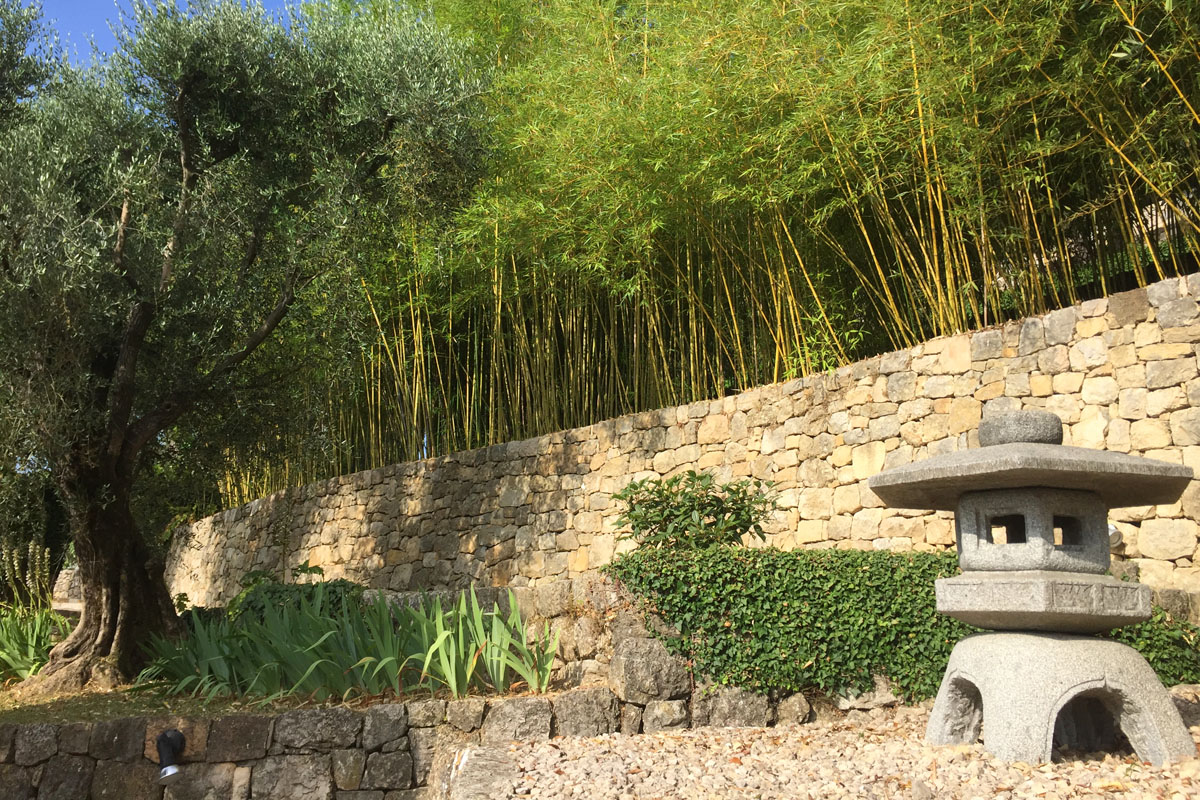
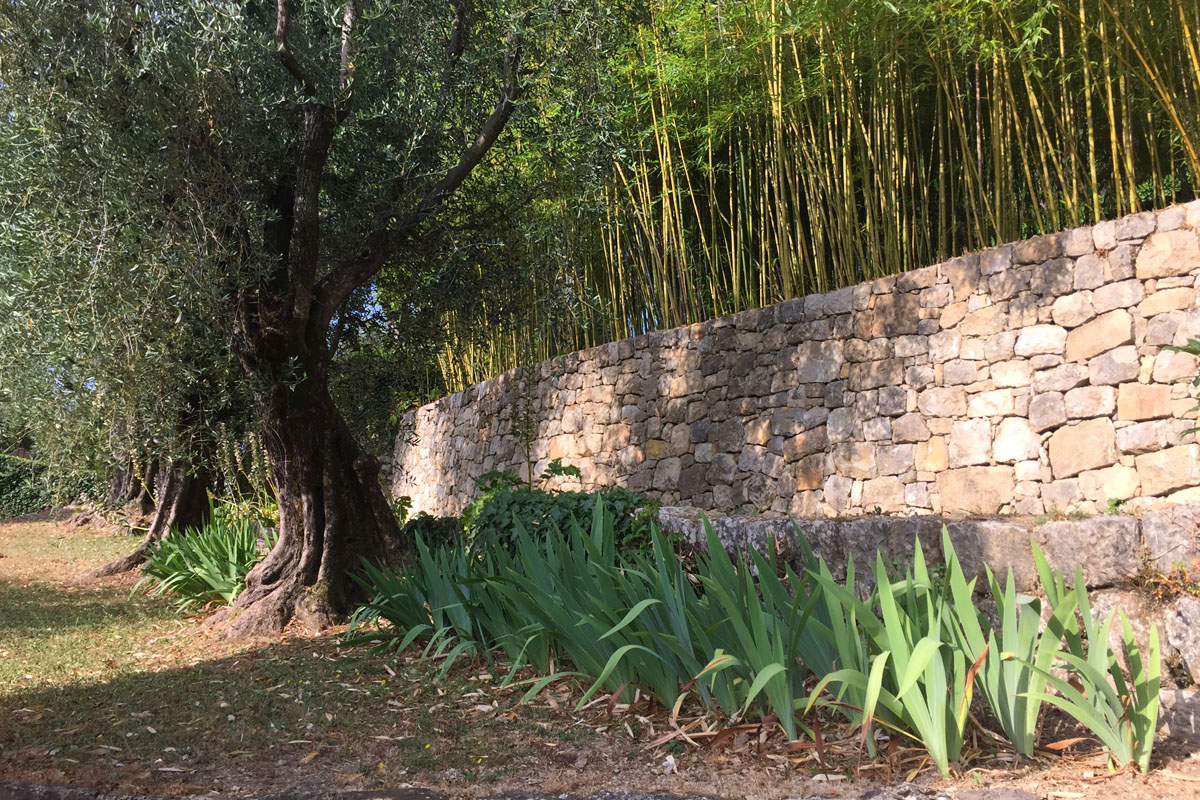
Inspiration
- Bamboos were not at the top of my plant list until a few coincidental happenings took place...
- I had spent four or five years studying plants and plantsmanship, and my husband asked for a return on his financial investment in the form of a 'signature' garden (Yikes!).
- My Plant School class had a visiting lecture to Abbotsbury Gardens with Roy Lancaster – who always persuades one to like and respect plants previously ignored. We learned much about having a bamboo garden and admired the bamboo plantation there.
- I visited the gardens of Les Cédres, Cap Ferrat – the largest privately owned botanical garden in Europe. Their bamboo plantation is vast, with stems fifteen centimetres in diameter, but best of all, it is edged in aspidistra.
Plant List
Bamboos
- Phyllostachys viridis glaucescens
- Phyllostachys vivax 'Aureocaulis' (gold stemmed bamboo)
- Phyllostachys nigra 'Boryana' (panther bamboo)
- Phyllostachys nigra (black stemmed bamboo)
- Semiarundinaria fastuosa (purple stemmed bamboo)
- Semiarundinaria makinoi (shorter copper stemmed bamboo)
Companion Plants
- Aspidistra eliator
- Aspidistra variegata sp.
- Aspidistra daibuensis
- Aspidistra zongbayi 'Uan Fat Lady'
- Acanthus mollis 'Hollards Gold'
- Bergenia cordifolia
- Cyrtonium falcatum
- Ophiopogon japonica
- Ophiopogon planiscarpus 'Nigrescens'
Supplier List
- Les Bambous du Mandarin: Montauroux, France
www.facebook.com/bambousdumandarin/ - Le Monde des Fougères - Pépinière Ezavin: Roquefort-les-pins, France
www.pepiniereezavin.com - Crûg Farm Nursery: Gwynedd, Wales
www.crug-farm.co.uk